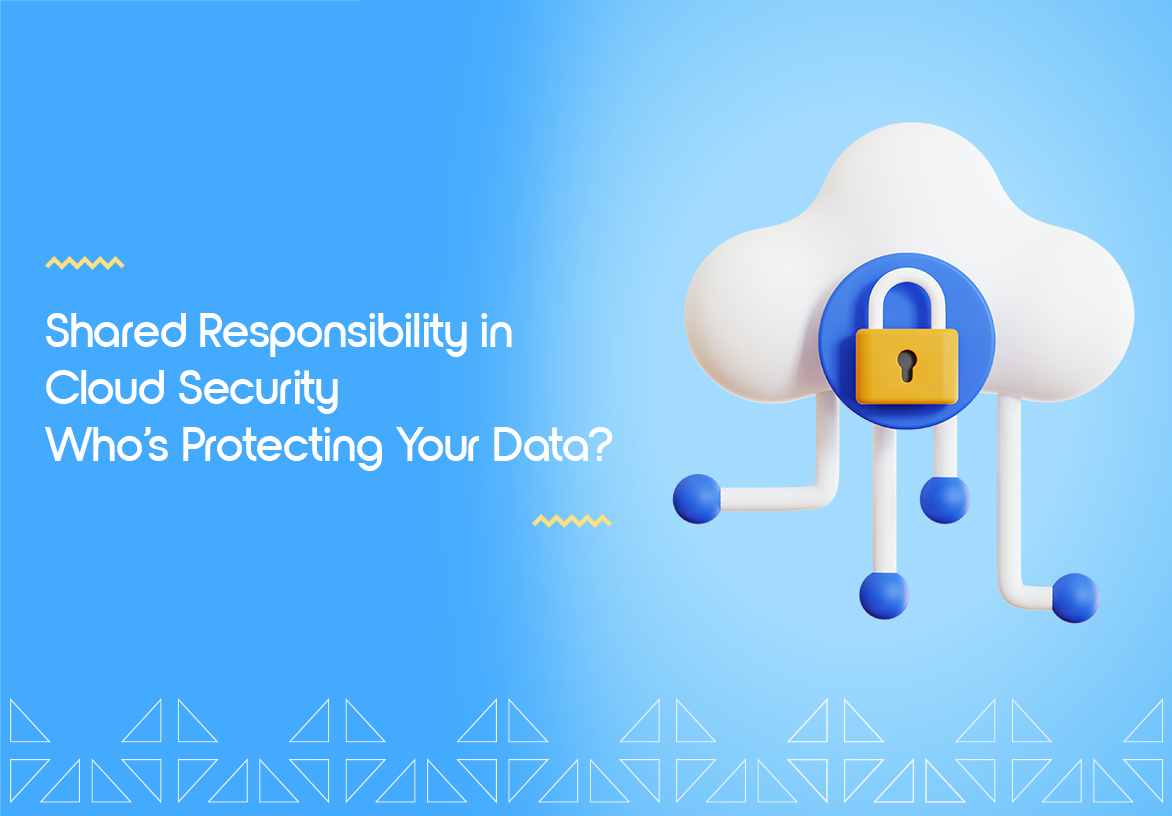How to Keep Your Cloud Data Secure In Shared Responsibility?
Want to keep your cloud data secure? Learn how shared responsibility in cloud security works and what steps to protect your information. Read on!
Cloud Security: Addressing Shared Responsibility
Cloud services are everywhere, making our lives easier and businesses more efficient. But when it comes to security, things can get a little tricky. Many people assume that their cloud provider is handling everything, but that’s not entirely true. Keeping your data safe in the cloud is a shared responsibility between you and your provider. In this article, Zcoderz will break down what this means and what steps you can take to ensure your data stays safe. Read on!
What is Shared Responsibility in Cloud Security?
Think of cloud security like renting an apartment. Your landlord (the cloud provider) is responsible for the building’s structure, but it’s up to you to lock your doors and windows. The cloud provider secures the infrastructure, things like servers, networks, and physical data centers, but you’re in charge of protecting your data, controlling who has access, and making sure you’re following regulations.
For example, if you store sensitive customer data in the cloud, you must ensure that only authorized people can see it, while the provider ensures that the servers running the cloud are secure
What Does the Cloud Provider Handle?
Cloud providers cover the heavy lifting when it comes to security. Here’s what they focus on:
Physical Security: They protect their data centers from intruders, disasters, and power failures.
Network Security: They provide firewalls, secure connections, and regular updates to keep systems safe.
Built-in Encryption: Many providers offer automatic encryption to help keep your data secure.
Compliance Support: They help you meet industry standards by providing secure, certified environments.
While cloud providers do a lot, they don’t cover everything. That’s where your role comes in.
What Are Your Responsibilities as a Cloud User?
Using cloud services doesn’t mean you can just sit back and relax. You have an important role to play in keeping your data safe. Here’s what you should focus on:
Protecting Your Data: Use strong passwords and encrypt your data before uploading it.
Controlling Access: Limit who can access your cloud resources and use multi-factor authentication.
Staying Compliant: Follow regulations like GDPR and HIPAA to avoid penalties.
Monitoring Activity: Regularly check who’s accessing your data and detect any suspicious behavior.
If you ignore these steps, your data could be vulnerable to attacks, even if the cloud provider does everything right.
Check out our Cloud Development Services in Australia and Dubai
Common Cloud Security Threats to Watch Out For
Cloud security isn’t foolproof, and there are threats you should be aware of, including:
Cyberattacks: Hackers use phishing, malware, and ransomware to steal your data.
Misconfigurations: If you don’t set up your cloud environment correctly, your data could be exposed.
Unauthorized Access: Weak passwords or poor access control can allow outsiders to get in.
Data Loss: Whether due to accidental deletion or insider threats, losing data can be costly.
Understanding these threats is key to preventing them.
Best Practices for Keeping Your Cloud Data Safe
Want to keep your cloud data safe? Follow these simple but powerful best practices:
Enable Two-Factor Authentication (2FA): This adds an extra layer of security to your accounts.
Keep Everything Updated: Regularly update your software and systems to patch security holes.
Back-Up Your Data: Always have backups so you can recover lost information quickly.
Encrypt Sensitive Data: Make sure your data is encrypted both when it’s stored and when it’s being sent.
Educate Your Team: Teach employees how to recognize security threats like phishing emails.
Choose the Right Cloud Provider: Do your homework and select a provider with strong security measures.
How to Pick a Secure Cloud Service Provider
Not all cloud providers are created equal, so it’s important to choose wisely. Here’s what to look for:
Providers that comply with standards like ISO 27001 and SOC 2.
Certifications for regulatory compliance, such as GDPR and HIPAA.
Clear and transparent security policies.
Strong customer support that can assist with security concerns.
Doing your research now can save you headaches later.
Real-World Success Stories
Some companies have mastered cloud security by embracing shared responsibility.
For example:
A large financial firm reduced cyber risks by enforcing strict access controls and encryption.
A healthcare provider secures sensitive patient data by closely monitoring cloud activity and ensuring compliance with industry regulations.
These success stories show how taking responsibility can lead to stronger security and better compliance.
Conclusion
Cloud security isn't something you can afford to overlook or leave entirely to your provider; it’s a shared effort. When you know what you're responsible for and take the right steps, you're setting yourself up for success. Whether it's managing access, encrypting sensitive data, or staying compliant with industry standards, every action you take helps protect your business.
At Zcoderz, we get it: cloud security can feel overwhelming. That’s why we offer cloud development, security audits, compliance support, and custom solutions tailored to your unique business needs.
Need help securing your cloud environment? Contact us today, and let’s work together to build a safer, more secure future for your business.

